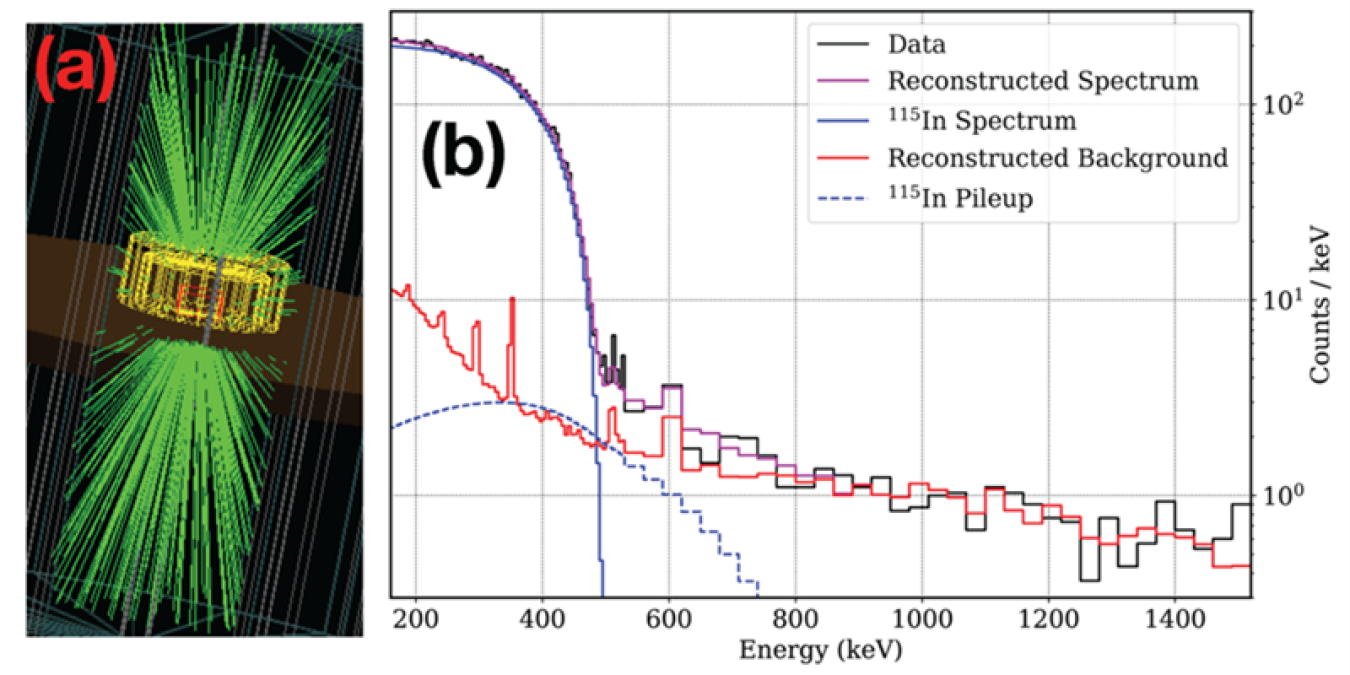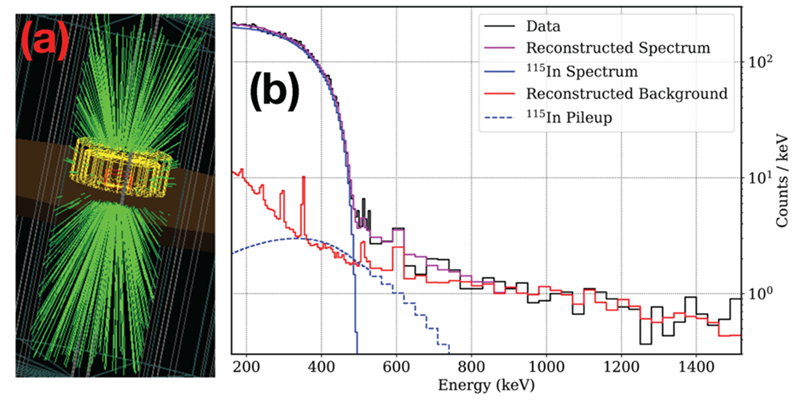
The Science
Certain isotopes such as Indium-115 (In-115) are extremely long lived, taking over 100 trillon years for half of the Indium atoms to decay away. These isotopes allow scientists to probe the precise internal processes that govern other extremely long-lived isotopes. New research helps scientists improve the frameworks they use to calculate half-lives and other nuclear properties, such as the structure of the protons/neutrons inside the nucleus. Using background simulation/subtraction techniques pioneered in other ton-scale nuclear decay experiments, scientists have extracted the energy spectrum of outgoing electrons from decays of In-115 that occurred inside a LiInSe2 crystal. At the same time, scientists also performed the world’s most precise measurement of the decay rate of In-115. This work expands scientific understanding of nuclear structure and paves the way for future experiments to probe nuclear structure for a variety of isotope sizes.
The Impact
The physics processes that determine the decay rate of mid-sized nuclei are difficult for scientists to probe. This is due to the large number of intermediate nuclear energy states. This study shows the viability of extracting clean electron (beta) energy spectra from various long-lived nuclei using low temperature crystal detectors. The research enables scientists to reduce the uncertainties involving intermediate energy states that play a role in long-lived nuclei. This would then allow for improved modeling of complex nuclear systems, such as the double beta decay of Tellurium-130. The reduction of these uncertainties plays a key role in improving the performance of other ton-scale nuclear decay experiments sponsored by the Department of Energy.
Summary
A collaboration including the University of California-Berkeley, Massachusetts Institute of Technology, the University of Jyvasklya in Finland, Universite Paris-Saclay, and RMD Inc. commissioned a new LiInSe2 detector to explore the possibility of high-quality, low-background bolometric detectors for use in nuclear decay model verification. The researchers collected data at near absolute zero temperatures to detect and record the very smallest spikes in temperature due to particle interactions, such as those from In-115 beta decays, via highly sensitive thermometers. The study rejected background events such as external gamma rays using a combination of particle simulations and careful examination of individual recorded decays. The result was a clean In-115 decay spectrum of the emitted electrons. Scientists at the University of California at Berkeley compared this spectrum to a library of predicted spectra generated at the University of Jyvaskyla and found the predicted spectrum that most closely matched the collected data. This extracted the most precise measurement to date of the In-115 decay rate. This measurement opens the door to a better understanding of the physics that govern the decays of extremely long-lived isotopes, such as Tellurium-130.
Contact
Alexander F. Leder
University of California, Berkeley
[email protected]
Funding
This research was funded by the Department of Energy Office of Science, a California Alliance Fellowship, an Academy of Finland Grant, an Academy of Finland Academy Project, and the National Research Foundation of Ukraine Grant. The research used data analysis and acquisition software developed by the CUORICINO, CUORE, LUCIFER, CUPID-Mo and CUPID-0 collaborations.
Publications
Leder, A., et al., Determining gA/gV with High-Resolution Spectral Measurements Using a LiInSe2 Bolometer. Physical Review Letters 129, 232502 (2022). [DOI: 10.1103/PhysRevLett.129.232502]
Scraped from https://www.sourcearu.com




